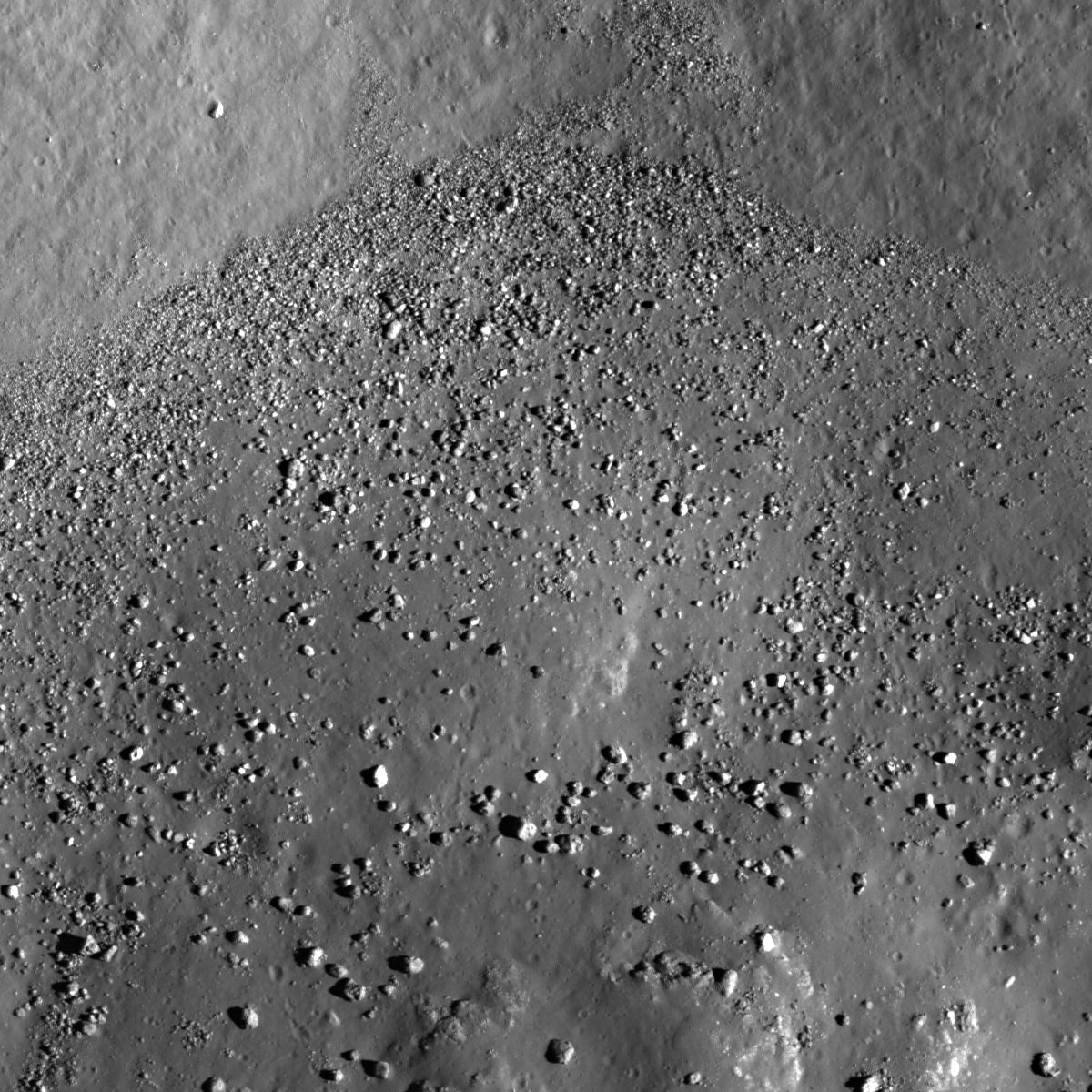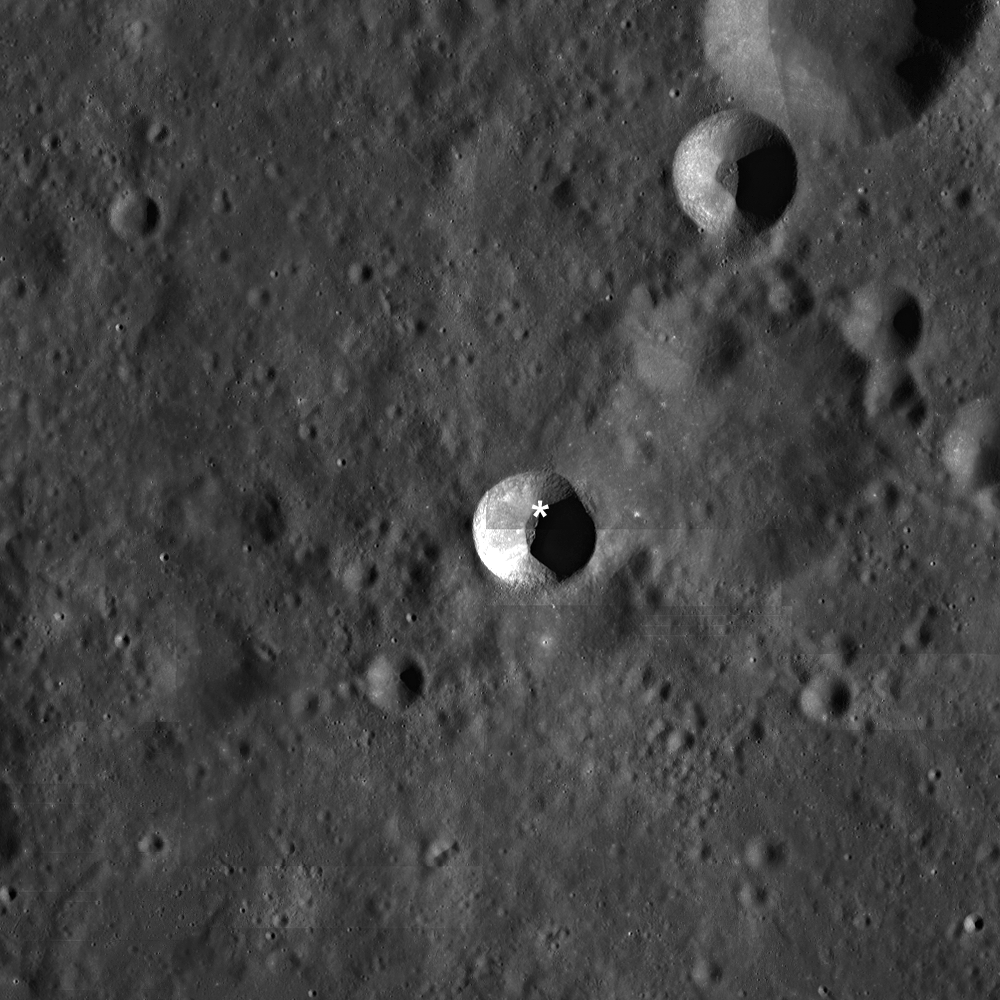
A distribution of boulders within the floor of an unnamed crater demonstrates physics at work. In the Featured Image (located in the lunar highlands at 6.275°N, 214.770°E) you can see that smaller boulders are (on average) closer to the boundary where the wall of the crater meets the floor. As distance increases from this boundary, the size of the individual boulders increases. Why is this happening?
The larger boulders have more kinetic energy at the bottom of the slope due to their greater mass. Kinetic energy is 1/2 the mass times the velocity squared. So at the bottom of the crater wall, the more massive boulders will have more kinetic energy than the small boulders, even though they are all subject to the same acceleration due to the Moon's gravity. The crater floor is relatively flat, so the larger boulders will travel further than the small boulders before coming to a halt. An alternative explanation is that larger boulders originate preferentially from the rim of the crater and thus fall from a greater height on average compared to small boulders. Either way, the larger boulders have more kinetic energy when the reach the bottom of the crater.
During the Apollo 15 mission, Commander David Scott performed a related physics experiment live for the TV cameras! You can watch the video here: Apollo 15 Hammer and Feather Drop. He dropped a rock hammer and a feather from the same height at the same time. The point of the experiment was to show that in an environment with no atmospheric drag (a vacuum) the feather and the hammer will fall at the same speed (and hit the ground at the same time) regardless of the difference in mass. This basic idea is attributed to Galileo. Read more about the Apollo 15 experiment here!
Physics is fun, especially on the Moon!
Explore the entire NAC frame!
Related Images:
Published by Sarah Braden on 4 December 2012
